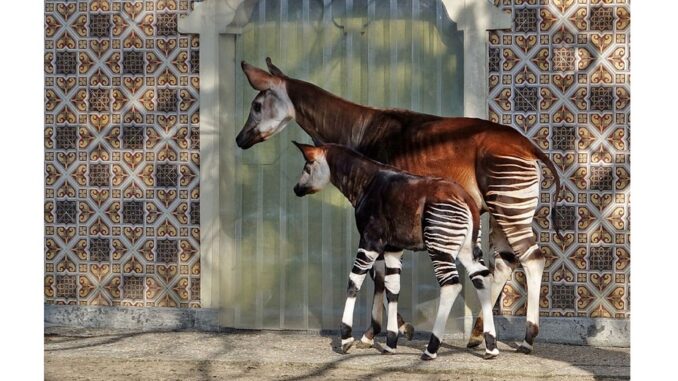
The okapi (Okapia johnstoni) looks like it ought to be a member of the genus Equus, but in fact it’s not related to horses, donkeys, or zebras at all. It is a member of the Giraffidae family, and the only living relation to giraffes. Okapis have long necks (although not nearly as long as a giraffe, obviously) and a head very similar in shape and appearance to the giraffe, including very short antlers or horns, known as ossicones. Also like giraffes, okapis have long, prehensile tongues used to nab fresh leaves and fruit. Their coat may be chocolate to reddish brown in color, or even maroon or purple-ish. An oil secreted by the okapi lubricates their coat, and the coat will stain hands with its color. Cool!
The home range of the okapi is the dense rainforest in the north-northeast of the Democratic Republic of the Congo. Due to deforestation and poaching, the International Union for the Conservation of Nature and Natural Resources (IUCN) classifies the opaki as endangered.
Scientific Classification
Kingdom: Animalia
Phylum: Chordata
Class: Mammalia
Order: Artiodactyla
Family: Giraffidae
Genus: Okapia (Lankester, 1901)
Species: O. johnstoni
Binomial name: Okapia johnstoni (P.L. Sclater, 1901)
“5 Weird, Wild & Wonderful Facts About Okapi” (2:17)
“Okapi | World’s Weirdest Animals” (3:21)
“This Amazing Animal Looks Like A Cross Between An Antelope, A Giraffe, and A Zebra! | The Zoo” (7:31)
